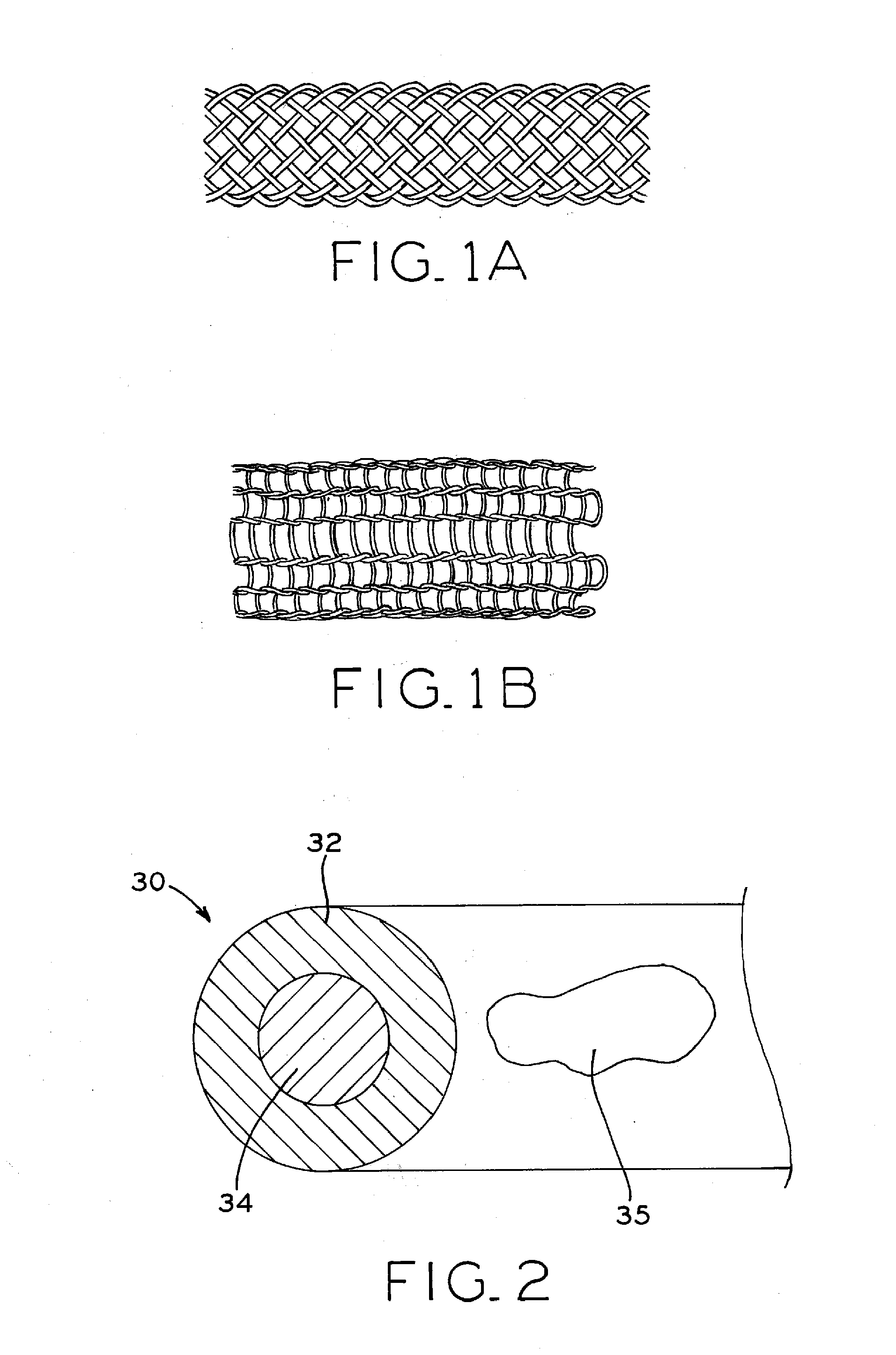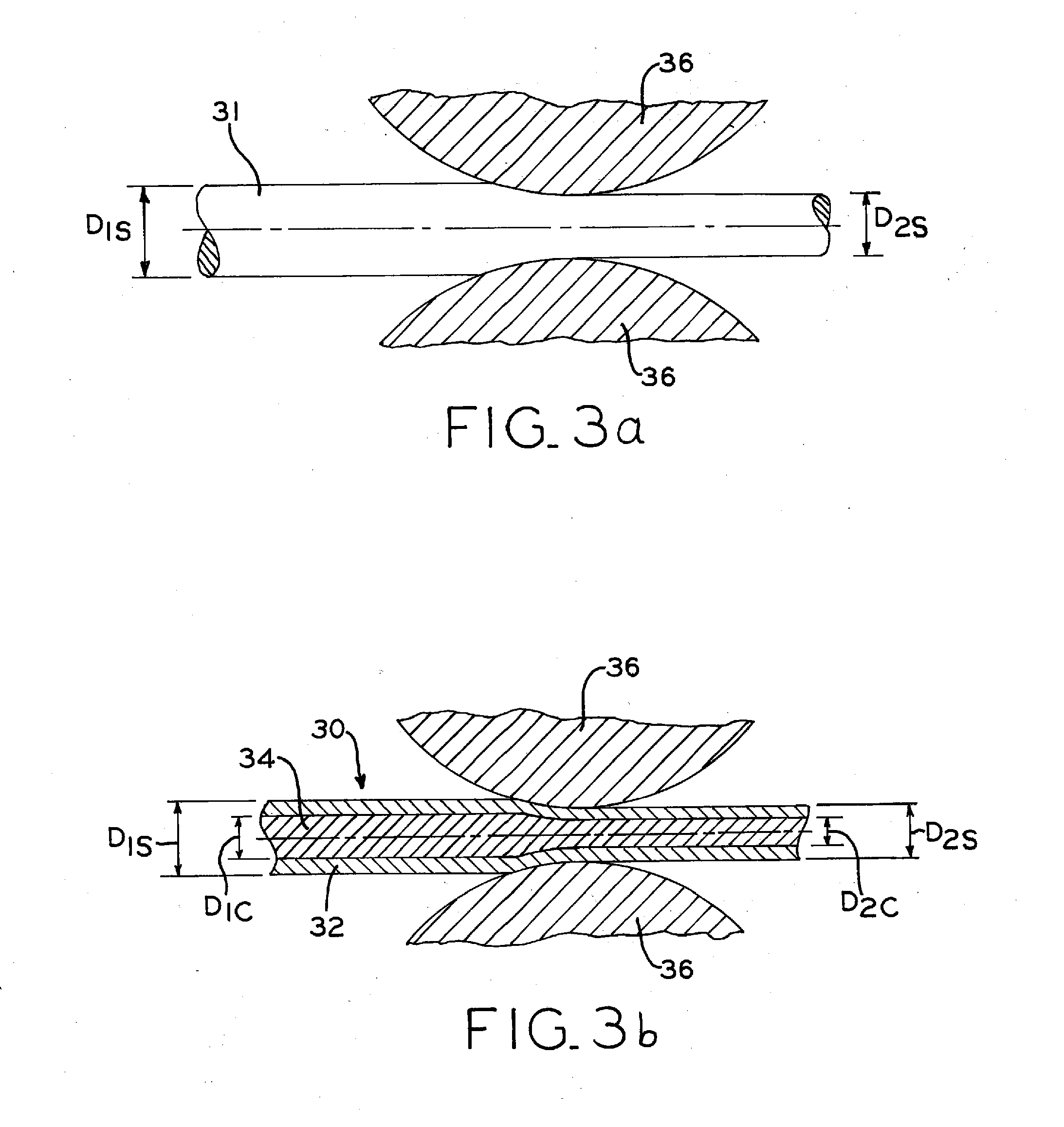Biodegradable composite wire for medical devices
a biodegradable, composite wire technology, applied in the direction of magnet bodies, prostheses, magnetic materials, etc., can solve the problems of increasing mechanical fatigue, limiting re-intervention, inhibiting further natural positive remodeling of the vessel, etc., to reduce the potential for pitting corrosion and enhance strength
- Summary
- Abstract
- Description
- Claims
- Application Information
AI Technical Summary
Benefits of technology
Problems solved by technology
Method used
Image
Examples
example 1
Monolithic Fe—Mn—X Alloy Wire Materials
[0129]In this Example, exemplary monolithic Fe—Mn wires alloyed with Cr, Mo, N or a combination thereof were produced, characterized and tested.
[0130]A Pitting Resistance Equivalent Number (PREN) can be used to compare the pitting corrosion resistance of various types of materials, based on their chemical compositions. In the present Example, PREN is calculated as:
PREN=Cr+3.3(Mo+0.5W)+16N,
in which all factors are expressed as a wt. % quantity.
[0131]Table 1-1 summarizes the PREN for wires made in accordance with the present disclosure. As shown, nine wire samples were produced, with groups of three samples having varying levels of Cr, Mo and N used as alloying elements. Each group of three samples alloyed varying wt. % amounts of a given alloying element as shown.
TABLE 1-1Pitting Resistance Equivalent Number (PREN) for various Fe—MnAlloy Wires Made in Accordance with the Present DisclosureTrialFeMnCrMoNNo.(wt. %)(wt. %)(wt. %)(wt. %)(wt. %)PRENb...
example 2
Monolithic Fe—Mn—X Alloy Wire Materials
[0133]In this Example, exemplary monolithic wires were produced, tested and characterized.
[0134]1. Production of Fe—Mn—X Monolithic Wires
[0135]Ingots were melted and cast into a 12.7 mm diameter by 150 mm length pre-form. Ingots with target chemistries in accordance with Table 1-1 were created by arc melting from primary metals of 99.95 wt. % minimum purity. These ingots were cold-formed into wire through conventional cold-working techniques including swaging and wire drawing combined with iterative annealing in order to restore ductility between respective cold-forming steps. All wires received a final recrystallization anneal treatment at a diameter of 0.64 mm prior to cold wire drawing to a finish diameter of 0.102 mm for testing and characterization.
[0136]2. Characterization of Fe—Mn—X Monolithic Wires
[0137]The rate of degradation of bioabsorbable materials can be measured in a laboratory using a simulated bodily environment, e.g. saline or...
example 3
Additional Candidate Materials for DFT Constructions
[0143]In this Example, exemplary bimetal composite wires and high strength iron monolith wires were produced, tested and characterized. In addition, three benchmark alloy wires were produced, tested and characterized for comparison to the exemplary wires.
[0144]1. Production of Bimetal Composite and Monolithic Wires
[0145]For Wire #1-3 in Tables 3-1 and 3-4 below, a pure Fe rod of dimension F mm outside diameter (OD) was processed as monolithic (solid) wire.
[0146]Similarly, for Wire #7-9 in Tables 3-3 and 3-4 below, 316L stainless steel, MP35N and Nitinol alloy wire respectively, of dimension H mm outside diameter (OD) were processed as monolithic wire.
[0147]For Wire #4-6 in Tables 3-2 and 3-4 below, a pure Fe tube of dimension A mm outside diameter (OD)×dimension B mm inside diameter (ID) was filled and drawn down over dimension C mm outside diameter (OD) pure Mg rod to create a first composite having the area fraction specified. Va...
PUM
 Login to View More
Login to View More Abstract
Description
Claims
Application Information
 Login to View More
Login to View More - R&D
- Intellectual Property
- Life Sciences
- Materials
- Tech Scout
- Unparalleled Data Quality
- Higher Quality Content
- 60% Fewer Hallucinations
Browse by: Latest US Patents, China's latest patents, Technical Efficacy Thesaurus, Application Domain, Technology Topic, Popular Technical Reports.
© 2025 PatSnap. All rights reserved.Legal|Privacy policy|Modern Slavery Act Transparency Statement|Sitemap|About US| Contact US: help@patsnap.com



